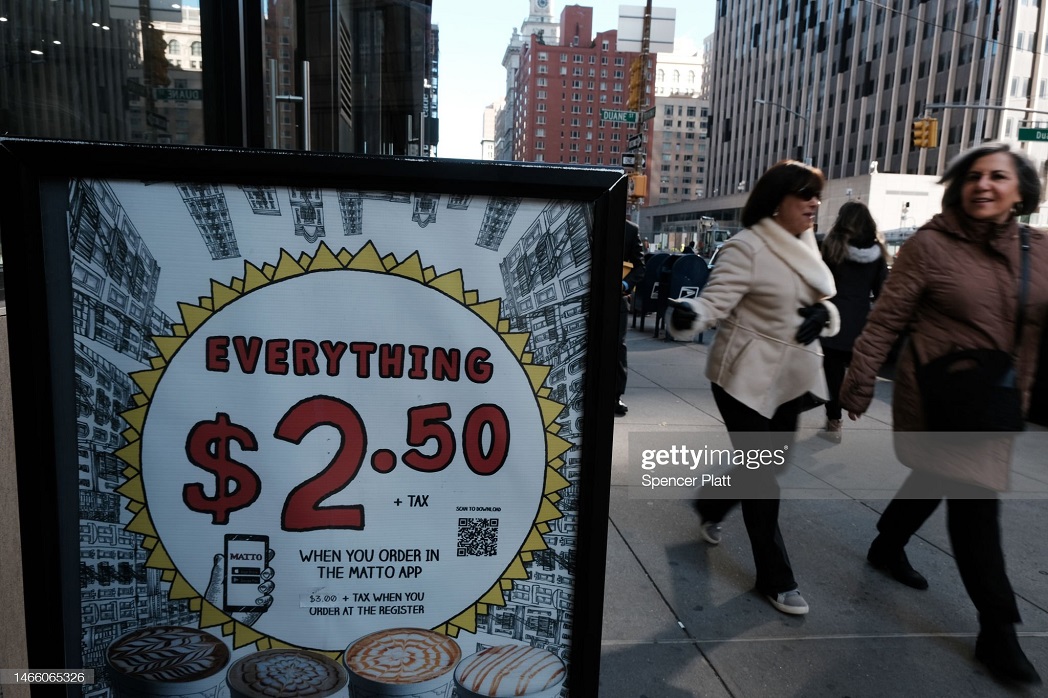What if the U.S inflation does not drop to 2%?
What if the U.S inflation does not come down to the 2% level that most central banks’ target on a sustained basis? We think there are three options and we also think we know which one the banks are likely to take.

The Fed does not seem to think so as its forecasts see PCE price inflation falling to 2.1% in 2025.
>> Inflation concerns persist for the long run
When looking at inflation in the major industrialised nations it seems that the main question now is not whether inflation has turned down in annual terms, but whether it will fall to the 2% level that most central bank’s target, and hold there. In the US, in particular, there must be concern on this score because the economy is proving quite robust, particularly the labour market.
Other countries too might just avoid recession but is this a good or a bad thing? It’s good in the sense that recessions are best avoided, but bad if the absence of a recession just mean the persistence of inflation above the 2% target. We can certainly see a danger of persistent inflation and particularly in the US. The Fed does not seem to think so as its forecasts see PCE price inflation falling to 2.1% in 2025 and the Bloomberg poll of economists has the same median forecast.
But what if these are wrong? What if inflation in the US, and other major nations, remains higher, at say at 3-4%? In this case we think policymakers have three options. The first is to accept higher inflation and even validate it by lifting inflation targets – and cut rates. The second is to lift rates significantly more than current market pricing to get the demand destruction that will ultimately get them to 2% inflation. The final option is to not lift rates much more but, instead, to maintain higher levels for longer. It is this third option that we think is most likely.
The idea of a higher inflation target appears to be anathema to central bankers, perhaps especially if they are forced into it by their inability to meet the 2% target. There might be an academic argument for lifting the target, such as the one that suggests a higher target will help avoid the zero-policy rate and QE problems of the past. But central bankers don’t seem to buy that right now and we suspect that they will remain reticent even if inflation persistently overshoots.
The second option of pushing policy rates up far more aggressively is possible but, in our view, only likely if annual inflation starts to rise again, so questioning the idea that price pressure will fall at all. In this case we suspect that central bankers would have to accept that they need far more demand destruction than they have already achieved. But this is not our call.
>> How does the money supply impact inflation?
Our argument all along has not been that inflation will lift off again but that structural long-term factors such as demographics (ageing population) and deglobalisation (the re-direction of supply chains, for instance) will prevent inflation from sustainably falling to the 2% target. If this does happen, we think the third option of holding rates at the terminal rate for longer, will be the banks’ preferred strategy. While this might seem weak the banks will still be able to argue that monetary conditions are tightening thanks to quantitative tightening even if policy rates are stable.
In addition, as nominal rates hold steady, real rates are likely to rise thanks to falling inflation, even if the fall in inflation does not get central banks back to the 2% level. Quite clearly, we could argue that such an approach is little more than the tacit acceptance of a higher inflation rate even if the 2% official target is not publicly lifted. This might seem a bad thing but don’t forget that the problem central banks had before the pandemic was a constant undershooting of inflation and a number, such as the ECB and Fed actually changed their monetary policy strategies to try get out of this situation.
The ECB did so by targeting 2% rather than “close to, but below” 2%, while the Fed moved to average inflation targeting of the 2% level with an asymmetric bias that is more accepting of inflation above 2% than below. Hence, in short, some central banks have already inched their way in this direction. It won’t be a huge stretch to push this on a bit further but investors may still have to accept that this means higher rates for longer.








